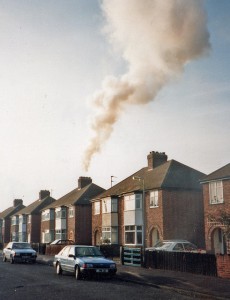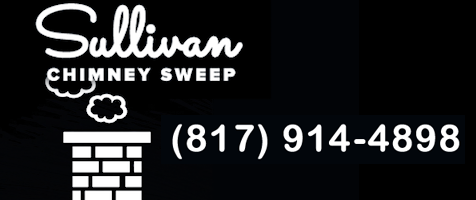How does it get in the chimney and why is it dangerous?
Wherever you burn wood (fireplace or wood burning stove, etc.), it creates a form of gases or small particles called pollutants. The gases are expelled from the burning wood with the smoke. When the gases cool to a temperature that is below 250˚ F, they will begin to liquefy, combine and condense. Once they combine and condense creosote is created. Creosote is a foul smelling corrosive that is extremely combustible.
 Creosote passes through any space it can-mainly your chimney. It can become many forms such as a liquid, a hard coating, or a fluffy type of substance. When creosote is a liquid, it runs down piping and chimneys, causing leaks. As a hard coating creosote covers the insides of chimneys and pipes. Creosote as a fluffy type of substance, can fill pipes and cause blockage.
Creosote passes through any space it can-mainly your chimney. It can become many forms such as a liquid, a hard coating, or a fluffy type of substance. When creosote is a liquid, it runs down piping and chimneys, causing leaks. As a hard coating creosote covers the insides of chimneys and pipes. Creosote as a fluffy type of substance, can fill pipes and cause blockage.
Creosote is the main reason why chimneys need to be frequently inspected and cleaned. Creosote build-up is extremely dangerous because it is the main cause of most chimney fires. There are a number of ways that you can help prevent the build-up of creosote in your pipes and chimney.
- Stoves should be installed with short pipes that boast as few bends as possible.
- A flexible, extending chimney brush can help remove excess creosote buildup between your annual inspection and thorough cleanout.
- Maintain a temperature of more than 250˚ F throughout the entire chimney.
- Remember that less smoke equals less creosote.
- Use only “seasoned” wood.
- Properly lined and insulated chimneys can significantly reduce the amount of creosote buildup you experience.
- Have your chimney professionally cleaned and inspected annually- or more often with heavy usage.





